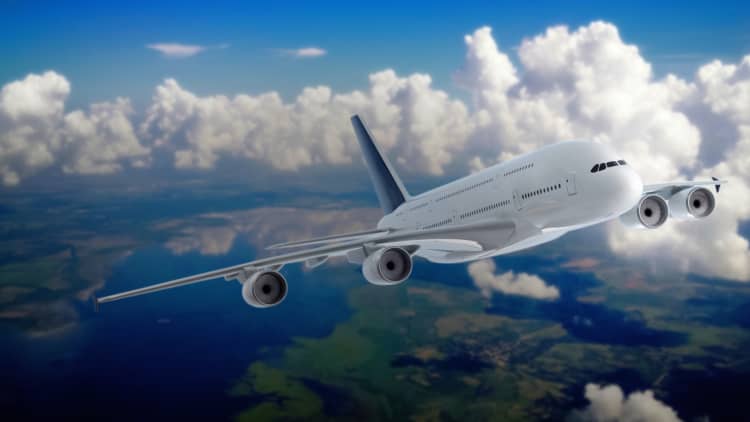
When the first commercial flight took off on 1 January 1914, the carbon emissions contributing to air pollution were probably not the highest priority.
More than a century later, in 2019, the actions of young environmental activist Greta Thunberg helped raise awareness of the Swedish term flygskam — translated as "flight shame" — to the rest of the world. Her decision to cross the Atlantic Ocean by boat, instead of going by plane, to attend a United Nations summit captured the world's imagination.
In fact, it was Swedish singer Staffan Lindberg, who started the movement in 2017 with his pledge to give up flying.
The aim of flygskam is to influence individuals to reduce their air travel, thus lowering the carbon emissions released by planes. To be clear, the aviation industry as a whole has also been making significant moves to implement environmentally-sustainable practices.
What is green aviation?
While carbon emissions from aviation accounted for about 2.5% of total global emissions in 2018, they have increased by 32% from 2013 to 2018.
According to NASA, green aviation is a term used to describe activities in the industry that improve aircraft efficiency, and reduce noise pollution and greenhouse gases — all that in turns lowers carbon emissions.
Airlines, aircraft manufacturers and airports are all taking important steps to ensure that the industry evolves to provide environmentally-conscious consumers with greener options.
Aircraft innovations are improving efficiency
Fuel consumption of aircraft has been vastly improving, with big players like Airbus and Boeing producing more efficient planes such as the Airbus A350 XWB and Boeing 737 Dreamliner. A fuel-efficient aircraft means the aircraft can travel a longer distance on one gallon of fuel.
The industry is also pumping in research and development into electric aircraft, whether it's a fully-electric aircraft or a hybrid-electric aircraft, which means an aircraft propelled by both fuel and an electric battery.
Diversification of aviation fuels
Another way to greener aviation is to diversify fuel type by using sustainable aviation fuels, which can be produced from plants, algae, cooking oil, and even municipal waste.
Sustainable aviation fuels are alternatives that can directly replace conventional jet fuel as they have the same qualities and characteristics. Both types of fuel can be used on the same aircraft, engine and fuel delivery system.
In 2019, an Etihad Airways commercial flight powered a Boeing 787 Dreamliner using a mix of jet and biofuel made from Salicornia, a plant that grows in the Abu Dhabi desert. In addition, more than 170,000 flights to date have used biofuel blends, including flights by Qantas Airways, United Airlines, Virgin Atlantic and Alaska Airlines.
Airports such as Norway's Oslo Airport and Bergen Airport, Los Angeles International Airport and Stockholm Arlanda Airport are also making sustainable aviation fuels available to all airlines on a regular basis.
Strategic targets for the aviation industry
In 2009, the International Air Transport Association put in place strategic targets for the aviation industry. This includes carbon-neutral growth from 2020, which means that even if there is an increase in traffic growth, the level of net carbon emissions will not increase. Other targets include reducing net carbon emissions by 50% by 2050, compared to 2005 levels.
As of July 2019, a total of 81 countries — representing nearly 77% of international aviation activity — have pledged to participate in the United Nations-negotiated plan known as the Carbon Offsetting and Reduction Scheme for International Aviation (CORSIA). It aims to put a cap to any increase in carbon emissions through the purchase of carbon offsets. Purchasing a carbon offset essentially means compensating for the carbon emissions produced by reducing emissions elsewhere.
The United States and United Kingdom, two of the biggest carbon emitters, have also joined the pact.
It would take a major collaborative effort to ensure the aviation industry remains on the right path, but combating climate change is a work in progress.
Another century of flying might unearth technological innovations advanced enough to ensure a greener way of life. Despite individual responsibilities to cut down unnecessary air travel, the onus remains with the aviation industry and governments to offer greener alternatives.


